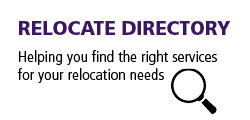Homeworking 'more or as productive' finds new CIPD research
New research by the CIPD shows the shift to homeworking over the pandemic has been a positive experience for most employers. Work-life balance, collaboration and focus have all improved.

Benefits of homeworking
Key findings from the research include:- In all, 65% of organisation report that the increase in homeworking has either increased productivity (28%) or had no impact on productivity (37%). In contrast 28% of employers reported a decrease and 7% don’t know
- Employers expect the proportion of their workforce that works from home regularly to double to 37% of the workforce on average after the crisis is over, compared to the pre-pandemic incidence average of 18%. Organisations also predict the proportion of the workforce that works from home all the time to more than double to 22%, compared to 9% before the crisis.
- The main benefits associated with more homeworking are reported to be a better work-life balance (61%), greater collaboration (43%), greater ability to focus with fewer distractions (38%) and IT upskilling (33%).
- The biggest challenges reported by employers include the unsuitability of jobs to be done from home (48%), reduced well-being among staff (47%), reduced staff interaction (36%) and the effectiveness of line management of home-based workers (33%).
- 44% of organisations are planning to put in place additional measures or investment to support homeworking. Of these, two thirds of employers (66%) plan to change organisational policy to promote more homeworking. A majority of employers said they were going to increase investment in technology in terms of improving the quality of technology (59%) and the quantity of laptops and computers (51%).
- Overall, just a third (33%) of employers say they plan to introduce new forms of flexible working or increase the uptake of existing flexible working arrangements more broadly, once lockdown restrictions ended. Where changes are planned, working from home regularly (70%) or all the time (45%) are most commonly cited, followed by part-time working (40%), flexi-time (39%) and compressed hours (25%).
The downsides of homeworking
The CIPD's research also highlights risks of two-tier workforce, as the gap is set to grow between home workers and other employees who have to go to work and have little flexibility. It also shines a light on the challenges of managing homeworkers, with employers highlighting reduced staff mental wellbeing (47%), problems with staff interaction/co-operation (36%) and difficulties with line managing homeworkers (33%) and monitoring their performance (28%). Acknowledging the risks, Peter Cheese says homeworking "doesn’t suit everyone and increasingly organisations will have to design working arrangements around people’s choice and personal preference over where and when they would like to work, whilst also meeting the needs of the business.“Employers will also have to redouble efforts to introduce flexible working arrangements for staff unable to work from home otherwise they will increasingly have a two-tier workforce of those who have opportunity to benefit from home working and flexibility and those who don’t. “It is often essential workers and lower paid front-line staff who are not able to work from home and it is crucial these workers are not left behind when we think about flexible working. Making the right to request flexible working a day one right would support the uptake of a wider range of flexible working beyond home working.”
It also shines a light on the challenges of managing homeworkers, with employers highlighting reduced staff mental wellbeing (47%), problems with staff interaction/co-operation (36%) and difficulties with line managing homeworkers (33%) and monitoring their performance (28%). Acknowledging the risks, Peter Cheese says homeworking "doesn’t suit everyone and increasingly organisations will have to design working arrangements around people’s choice and personal preference over where and when they would like to work, whilst also meeting the needs of the business.“Employers will also have to redouble efforts to introduce flexible working arrangements for staff unable to work from home otherwise they will increasingly have a two-tier workforce of those who have opportunity to benefit from home working and flexibility and those who don’t. “It is often essential workers and lower paid front-line staff who are not able to work from home and it is crucial these workers are not left behind when we think about flexible working. Making the right to request flexible working a day one right would support the uptake of a wider range of flexible working beyond home working.” Subscribe to Relocate Extra, our monthly newsletter, to get all the latest international assignments and global mobility news.Relocate’s new Global Mobility Toolkit provides free information, practical advice and support for HR, global mobility managers and global teams operating overseas.
 Access hundreds of global services and suppliers in our Online Directory
Access hundreds of global services and suppliers in our Online Directory
©2025 Re:locate magazine, published by Profile Locations, Spray Hill, Hastings Road, Lamberhurst, Kent TN3 8JB. All rights reserved. This publication (or any part thereof) may not be reproduced in any form without the prior written permission of Profile Locations. Profile Locations accepts no liability for the accuracy of the contents or any opinions expressed herein.




































